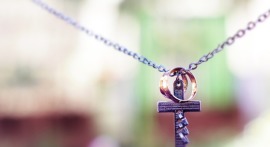
A recent study released by Centers for Disease Control found that gay and bisexual teenagers were more vulnerable to bullying and being involved in abusive dating relationships, and were more likely to consume alcohol and drugs.
The CDC interviewed about 15,624 teens from 9th to 12th grades in 125 public as well as private schools.
A Youth Risk Behavior Surveillance System (YRBSS) was developed by CDC to track health-related behaviors in teens including drug, alcohol and tobacco use, sexual behaviors, and violent and risky behaviors.
About 89 percent of the students identified as heterosexuals, 2 percent as gay or lesbian, and another six percent as bisexuals. Some 3 percent of the students were not sure about their sexual identity.
According to the report, students who have had same-sex or bisexual relationships were more likely to consume alcohol and drugs.
About 75.3 percent of the gay and bisexual students admitted to having had at least one drink in their lifetime, as compared to 62.5 percent of heterosexual students.
Some 24.5 percent of LGB students had drunk alcohol before the age of 13, while only 16.3% of heterosexual students conceded to that. Gay and bisexual teens were also two to three times more likely than their heterosexual counterparts to have used a range of drugs including hallucinogens, cocaine, ecstasy, heroin, and steroids without a doctor's prescription.
Gay and bisexual students were also more likely to have had sexual intercourse than heterosexual students.
About 50.8 percent of the gay and bisexual teens answered affirmatively to having had sexual intercourse as compared to 40.9 percent of the heterosexual students.
More LGB students (7.3 percent) than heterosexual ones (3.4 percent) had sexual intercourse before the age of 13.
Homosexual and bisexual teens (17.8 percent) were three times more likely than their heterosexual classmates (5.4 percent) to have been physically forced in sexual intercourse.
LGB students (17.5 percent) were also twice as likely than heterosexual ones (8.3 percent) to have had encountered physical abuse while dating during the past 12 months.
A slightly higher number of LGB students (18.9 percent) as compared to heterosexual teens (16.0 percent) admitted to having carried weapons at high school. But, LGB students (10.0 percent) were twice as likely than heterosexual students (5.1 percent) to have experienced being threatened by a weapon at school premises.
Suicidal thoughts were seen to be considerably high among the homosexual and bisexual teens. About 42.8 percent of the gay and bisexual students had seriously contemplated suicide, compared to 14.8 percent heterosexual teens who did so.
As many as 38.2 percent of the gay and bisexual students had made plans to attempt suicide, while only 11.9 percent of the heterosexual students had done so.
The school attributed the high-risk behaviour of LGB teens to "stigma and discrimination" which needed to be alleviated by "creating and sustaining positive school environments which are associated with less suicide ideation and fewer suicide attempts, lower prevalence of substance use, and fewer school absences among sexual minority students."
However, according to Log Cabin Republicans President Gregory T. Angelo, education and enculturation of youths in schools cannot guarantee a clean behavior from the students.
"A plurality - or even a majority - of support for the LGBT community by young Americans does not mean the next generation is devoid of homophobia or incapable of bullying and violence against their LGBT peers," he told The Stream.
Professor Robert Lopez, President of the International Children's Rights Institute and a self-described bisexual, said that the unwelcoming environment cannot alone explain the high instances of relationship and substance abuse among the LGB students.
"For instance, gay teens report high rates of being beaten up by their significant others, of being forced to have sex against their will by people they are dating - which would imply that in the gay dating pool there are just a lot more uncharitable behaviors in general. It is simply impossible that all these outcomes are the result of homophobia," Lopez said.
"We are hearing the usual and predictable responses from LGBT activists who say that homophobia's rampant and more needs to be done for LGBT youth," he continued. "This is a questionable reading of the surveys considering that LGBT activists have had decades of support and overwhelming political sympathy from these younger generations of students, plus so much discipline is carried against any students who do homophobic things, it would seem utterly implausible that there's a massive wave of anti-LGBT violence that we are only now discovering."
Angelo told The Federalist that the education authorities need to shed new light on the problem of high-risk behavior among the gay and bisexual students.
"We need to look at new approaches to harm reduction in the LGBT community to lower rates of drug use and other unhealthy activities," he said.



















